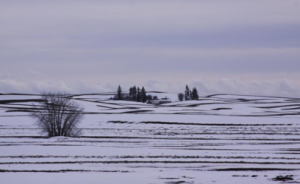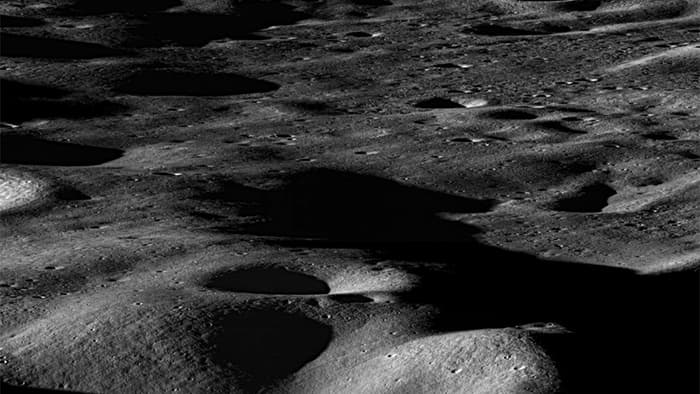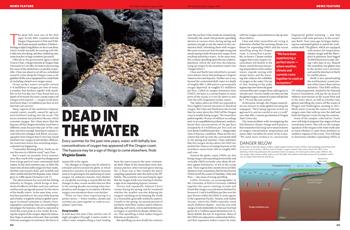In the long rain shadow of the Cascade Mountains, where dryland wheat farmers have eked out livings for more than a century, climate change is very much an issue of the present.
The rain gauge is always in the back of the mind for Mike Nichols, a wheat farmer cultivating 20,0000 acres across two counties in south-central Washington state.
It has to be: Nichols doesn’t irrigate, and with less than six inches of precipitation a year, his wheat crop is already on the edge of what’s considered possible for dryland farming. When drought hits or if, as expected, the West gets drier, his operation will be in trouble.

A wheat field outside of Palouse, Wash. is dusted by a January snow. Most of Washington’s wheat crop is watered only with rain falling from the sky – a future facing many farmers across the West as water supplies dwindle and the climate shifts to drier conditions. Credit: Josh Smith/flickr.
“The last eight years have been pretty good,” said Nichols. “But we are putting some [cash] aside, because down the line we know we’re going to go through another drought.”
Although Nichols remains stoic about the potential that climate change could eventually have on his livelihood, his innovative dryland farming methods enable his crops to better handle low moisture conditions.
But there are legions of farmers in the West and Midwest dependent on dwindling aquifers and over-subscribed rivers for irrigation. If today’s drought conditions continue, a whole new generation of growers may join Nichols and return to wholly rain-fed farming. Read more






